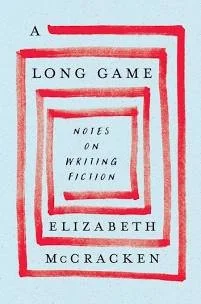5 HOT BOOKS: The Magic of New York City, Figuring Out Lady Bird Johnson, and More
/1. New York, New York, New York: Four Decades of Success, Excess, and Transformation by Thomas Dyja (Simon & Schuster)
Dyja hoisted the chip off the City of Big Shoulders in his award-winning The Third Coast: When Chicago Built the American Dream, and now he takes a big, juicy bite out of the Big Apple. He fully grasps the DNA of New York, as it lurched forward over three incarnations, each one “bigger, faster, and sleeker than the one before, each one more merciless and beautiful.” Dyja tracks New York’s transformation from the hollowed-out, lawless city of the 1970s, where serial killer Son of Sam exclaimed, “Hello from the gutters of N.Y.C.,” into a gleaming metropolis of inequality that promotes a “new culture of wealth and celebrity valued explicitly because it was so visible.” Fans of Jane Jacobs’ classic The Death and Life of Great American Cities will applaud Dyja’s incisive, insightful book.
2. Lady Bird Johnson: Hiding in Plain Sight by Julia Sweig (Random House)
Known for her beautification efforts that have brought flowers to roadways across America, seen as the quintessential first lady with a stiff upper lip and a soft Southern lilt, Lady Bird Johnson, it turns out, was also thinking about the Vietnam War and civil rights, and advising her husband, President Lyndon Johnson, not to seek reelection. Thanks to Sweig’s creative, prodigious work, Claudia Alta "Lady Bird" Johnson is ready for her close-up. Lady Bird dictated daily audio diaries and 123 hours of her time in the White House and left portions sealed until she died in 2007 at age 94. Now Sweig has dug deeply into those surprising diaries and written a marvelous book — and produced an excellent podcast revealing Lady Byrd’s influence on her husband’s presidency, and underscoring the exciting prospects of encountering overlooked historical clues to fascinating stories.
3. Shooting Midnight Cowboy: Art, Sex, Loneliness, Liberation, and the Making of a Dark Classic by Glenn Frankel (Farrar, Straus and Giroux)
Pulitzer Prize-winning journalist Frankel (High Noon) delivers a vivid chronicle about the classic 1969 film Midnight Cowboy, the only X-rated movie to win the Academy Award for Best picture. Frankel covers the film’s main contributors: James Leo Herlihy, whose 1965 novel was the basis for the movie; director John Schlesinger, who took a chance on a novel “so bleak, troubling, and sexually raw that no ordinary film studio would go near it”; formerly blacklisted screenwriter Waldo Salt; actors Jon Voight and Dustin Hoffman (both of whom Frankel interviewed); and casting director Marion Dougherty, who persuaded Schlesinger to take a chance on then-unknown Voight. Frankel offers behind-the-scenes anecdotes, notably about the challenges of filming in New York City during a garbage strike, and in Texas, where the film crew needed protection from a den of rattlesnakes. Frankel also renders the social upheaval of the era – the Stonewall riots, anti-war protests, and racial unrest – and the window between the collapse of old Hollywood’s heavy censorship and the rise of the profit-oriented blockbusters when Midnight Cowboy was made. This enthralling account of a boundary-breaking film should lasso in a whole lot of film buffs.
4. It’s in the Action: Memories of a Nonviolent Warrior by C.T. Vivian with Steve Fiffer, foreword by Andrew Young (NewSouth Books)
At age 95, the Rev. C.T. (Cordy Tindell) Vivian died in July 2020 while working on his memoir, but how fortunate he was to have Fiffer as his collaborator, who could take over and convey Vivian’s flair and passion over seven decades of devotion to equality. The memoir opens simply and powerfully: “First came the darkness. Slavery.” The Missouri native grew up in Illinois in a household where his mother and grandmother were passionate about religion and education. In 1960 Vivian joined John Lewis and Diane Nash to integrate Nashville, making his way south to work with the Southern Christian Leadership Conference, the Freedom Riders, and Martin Luther King Jr., and to face down Sheriff Jim Clark in Selma. Passionately devoted to nonviolent action, Vivian (with Fiffer) has produced a deeply moving, elegantly written memoir. Of King, he writes: “Martin became America’s greatest social strategist by taking the Bible in one hand and the Constitution in the other, and then turning them on America like a mirror.”
5. A Beginner’s Guide to America: For the Immigrant and the Curious by Roya Hakakian (Knopf)
“Where are you from?” That question is so deeply embedded into American life that it seems reflexive. That may be part of the problem, or at least one of the themes in Hakakian’s remarkable narrative. “You have arrived at the most vexing four words of your early days in America.” Through the use of the second person and a “guidebook” structure, Hakakian’s writing possesses a lyrical quality as she describes quotidian details of life, from arriving in the U.S. on to shopping, then sex and romance. Lessons appear in discrete boxes – for example, “A Car Ride with Two Dissident Parents and Their Very Young Children” and “The Unauthorized Biography of an American Asparagus” – and they read almost like prose poems. She may draw from her own experience arriving in the U.S. from Iran in 1984, but Hakakian easily segues from the primer style in the first part of her book to a wider lens, as she describes the history of immigrants and their shared anxieties about cultural dislocation and loyalty to their places of origin.










